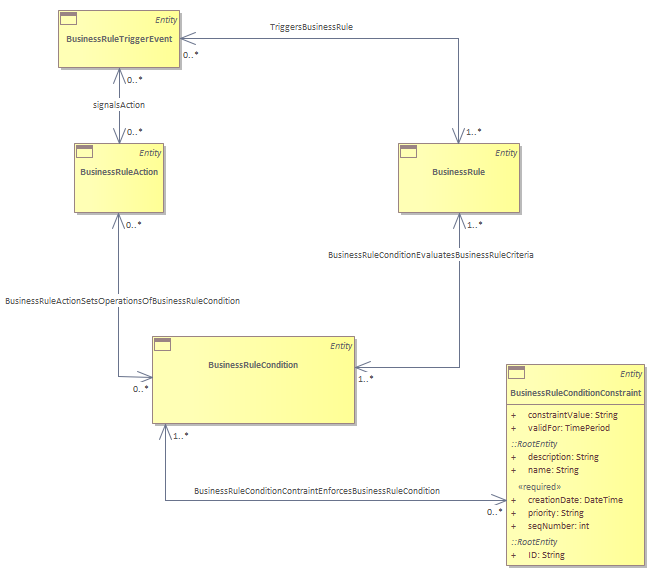Figure BR.02 - Business Rule High Level Entity Model

|
Project:
|

Figure BR.02 - Business Rule High Level Entity Model : SID diagram
Following as a conceptual representation of BUSINESS RULE with related entities and the meanings to the relations is depicted. <br/>In the diagram,<br/><ul>
<li>BusinessRuleTrigerEvent - Represents an event or trigger that initiates the execution of a business rule. For example, when a specific condition occurs (e.g., a customer places an order), it triggers the associated rule to be invoked.</li></ul> <ul> <li>BusinessRule - Represents the specific business rule. It combines the events, conditions, and action components to formalize the full implications of the rule. The rule defines what should happen when certain conditions are met, and the consequences of those conditions being met might be more than one action.</li></ul> <ul> <li>BusinessRuleCondition - This represents the logical conditions that must be satisfied for the rule to execute. Conditions evaluate specific criteria (e.g., “If the order total exceeds $100”). Multiple conditions can be associated with a single rule.</li></ul> <ul> <li>BusinessRuleAction - This defines the actions or consequences that occur when the rule is triggered. Actions can include operations like applying discounts, sending notifications, or updating data.</li></ul> <ul> <li>BusinessRuleConditionConstraint - This addresses the need to capture any additional constraints or criteria related to the conditions. Constraints are added refinement to the conditions (e.g., “Checks if the customer is a gold member”).</li></ul><p/> |





